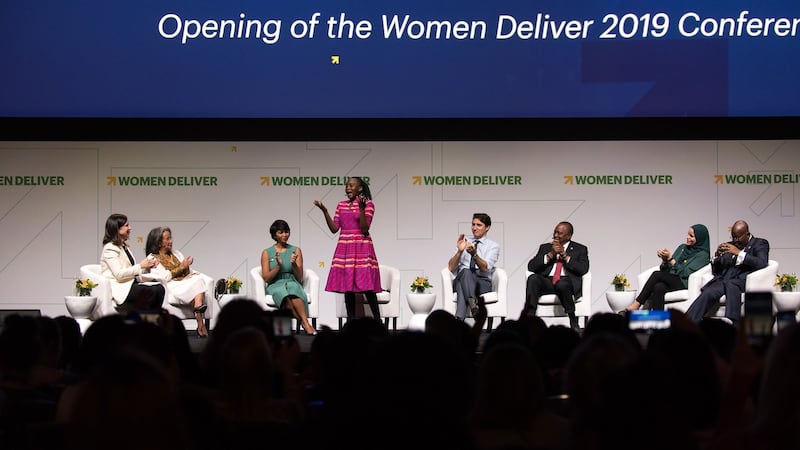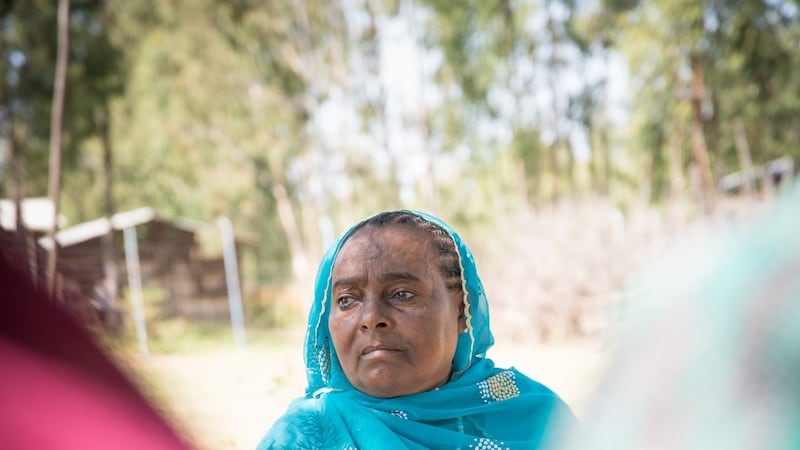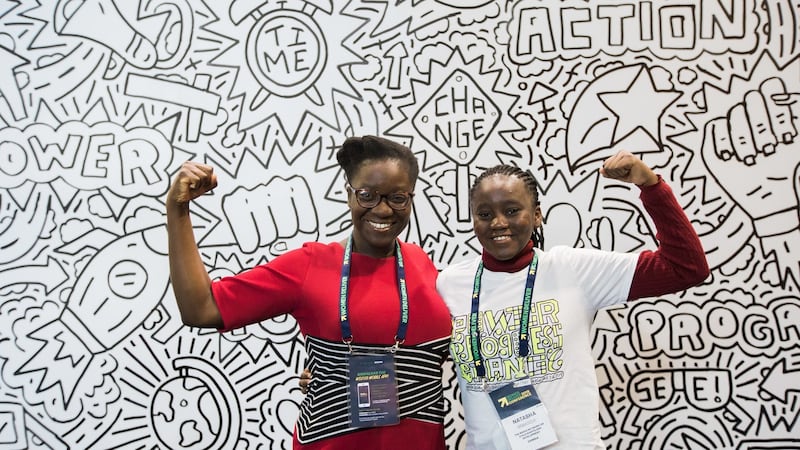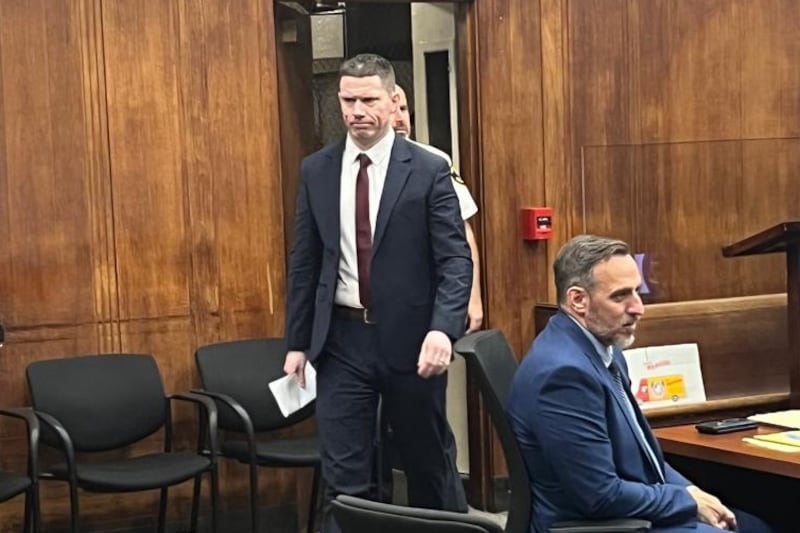Shakila Zareen’s fingernails are painted in alternate colours of rose pink and glittery blue. She’s wearing a vividly embroidered red dress and gold pumps, pink lipstick and bronze eyeshadow. She’s 24, and sitting on a sofa overlooking the Vancouver waterfront she flashes a beautiful but lopsided smile.
On one side of her face there is no eye socket and a scar that tells the story of the day her life changed forever. Tomorrow morning she will have her 11th round of reconstructive surgery.
Half of Shakila's face was blown away when her husband shot her in her home country of Afghanistan. She had been forced to marry him at the age of 16.
“He hit me and abused me on a daily basis. He and his family members sexually assaulted me. One day I reported him to the police. When he found out, he shot me in the face. I lost the child I was carrying.”
Even though speaking up cost Shakila her face and her country, she has chosen to speak out again to try to help others caught up in early or forced marriages. At the launch of a global call to end child marriage at this month’s Women Deliver conference on gender equality in Vancouver, she had a clear and emphatic message.
“This attack did not make me weak, it made me stronger. I want to be a voice for all the girls who don’t have a voice.”
More than 700 million women alive today were married before the age of 18.
It’s estimated that one in five were married before the age of 15. Almost half of all “child brides” live in south Asia and 17 per cent in Africa.
The global partnership to end child marriage, Girls Not Brides, says child marriage often ends girls’ education, reduces their lifelong income and, as in Shakila’s case, exposes them to the risk of domestic violence. Early pregnancy also puts girls’ lives and health at risk; the leading cause of death among girls age 15-19 in developing countries is childbirth.

According to Unicef, nine out of the 10 countries with the highest child marriage rates are fragile or extremely fragile states, with girls more vulnerable to child marriages during and after conflict, displacement, and natural disasters. Girls are also at risk of abduction involving child marriage, such as the Yazidi girls captured by Islamic State, and Nigerian girls captured by Boko Haram.
In some countries such as Afghanistan, a culture of gender inequality and violence against women is deeply ingrained. After Shakila was shot, her mother took to her hospital in Kabul. The Indian government brought her to Delhi for treatment and, facing threats from her husband, she was granted asylum in the US.
But under the Trump administration this was revoked. She eventually made her way to Canada with her mother. Her husband was arrested but was released on bail and never prosecuted.
Speaking up
“When I was a kid I always noticed women don’t speak up against violence,” she says. “The law is made by men, for men. The first thing I would like to see is that domestic violence is made a crime and that the law is enforced.”
“Shakila’s story is the story of many girls, who are not as visible but whose cases are just as heart-breaking,” says Dana Buzbucea, World Vision’s advocacy leader.
“Norms create such a pressure, that standing up for your own rights is amazingly inspiring. She was extremely brave.”
Now settled in Canada, Shakila cannot imagine going back to Afghanistan. However, she is in contact with other young women there via social media, and believes coverage of what happened to her has made a difference.
“Other people, when they heard my story, decided not to be silent anymore. I cannot support others girls financially but I can introduce them to other people, tell them how to get out of an abusive relationship, where to get help”.
While global NGOs campaign against early and child marriage at a governmental and international level, they recognise that one of the most effective way to change attitudes and behaviour is within communities.

In countries that don’t have proper child-protection systems or legal enforcement of marriage age, agencies such as World Vision often work with faith leaders. The Vancouver call to action asks them to speak out against child marriage and refuse to perform marriage ceremonies.
Meryem Yusuf was married at the age of 12 to a much older man. She came to Vancouver from Ethiopia to share her story and inspire other advocates. “I was in grade five. I loved school, but my family decided, without my knowledge, to give me into a marriage. They wanted the financial gain. When I tried to keep going to school, my mother threw stones at me.”
Meryem had five children, and ensured they all got an education. Later she decided she wanted to do something to help other girls. As a leader of a women’s Muslim association she trained with World Vision, and started working with her neighbours to dissuade them from marrying off their daughters. She says she has directly prevented 10 child marriages and now works with other women’s groups, teachers and health workers at a local level.
Direct action
“Sometimes I hear what is happening from children at school and then I go to talk to the parents. I tell them my life experience. I tell them I still blame my parents and that their children will blame them in future.”
One of the noticeable features of the Women Deliver conference was the number of young women from developing countries advocating directly, and rejecting the concept of their needs being decided by NGOs, donors or governments.
“Nothing for us without us. We are not going to be ‘beneficiaries’ anymore. It’s 2019,” said 18-year-old Natasha Mwansa from Zambia, who received a standing ovation while sharing a stage with the prime minister of Canada and the presidents of Kenya, Ethiopia and Ghana.
“This is about female empowerment. I hate when we call it child marriage. It’s paedophilia, it’s inhumane. We can’t have girls being married off, we can’t have girls missing out on their education.”
Natasha, who is a student at the University of Zambia, said young women needed capacity building and literacy to be able to express their needs. “If you don’t know healthcare is a right not a privilege, how can you demand it?”
For Girls Not Brides, the next step is to break the taboo around sexuality in the discussion of child marriage. A new report, Tackling the Taboo, states that control of adolescent girls’ sexuality is one of the main drivers of child marriage. Programmes addressing sexual and reproductive rights and health are beginning in even the most conservative societies, and in some countries child marriage rates have started to fall.
Sexual health
“We need to get sexual health information out into communities, and to ensure that contraceptives are available,” says Mabel van Oranje of Girls not Brides. “Otherwise young people who want to have fun for a night or a week will end up in a child marriage.”
Oranje points out that young boys are also at risk of child marriage. Fundamentally, addressing the issue of child marriage means making sure that young women and men have the right to decide if, whom and when they marry and have children.
For Shakila, the next challenge on the agenda is another round of surgery to reconstruct her nose. After that, surgeons will move on to her eye socket. When she came to Canada she stopped wearing an eye patch and faces the world on her own terms.

“My face and looks are getting better,” she says. “But to do that they always have to take a bit of flesh from my body, like my chin or my thigh. So I will always carry the scars.”
She remains open to the possibility of marrying again, but this time it would be her choice. “Why not, if it is a man who respects women, who does not see women as below him. Beauty and looks should not be important, if we love each other.”
Despite what she has been through, Shakila retains hope, strength and a determination to define the terrain she campaigns on. “I want people to remember that we are not victims. We are the survivors. We are warriors.”
World Vision and Girls Not Brides: six-point call to action to combat child marriage
1. Adopt or enforce legislation with 18 as the legal age for marriage.
2. Listen to girls and empower and support them.
3. Invest in education systems that guarantee girls access.
4. Invest in changing harmful traditional norms and practices that condone child marriage by scaling up national awareness-raising campaigns.
5. Recognise the heightened risk of child marriage in emergencies and fragile contexts.
6. Invest in services to rehabilitate victims of child marriage.


















